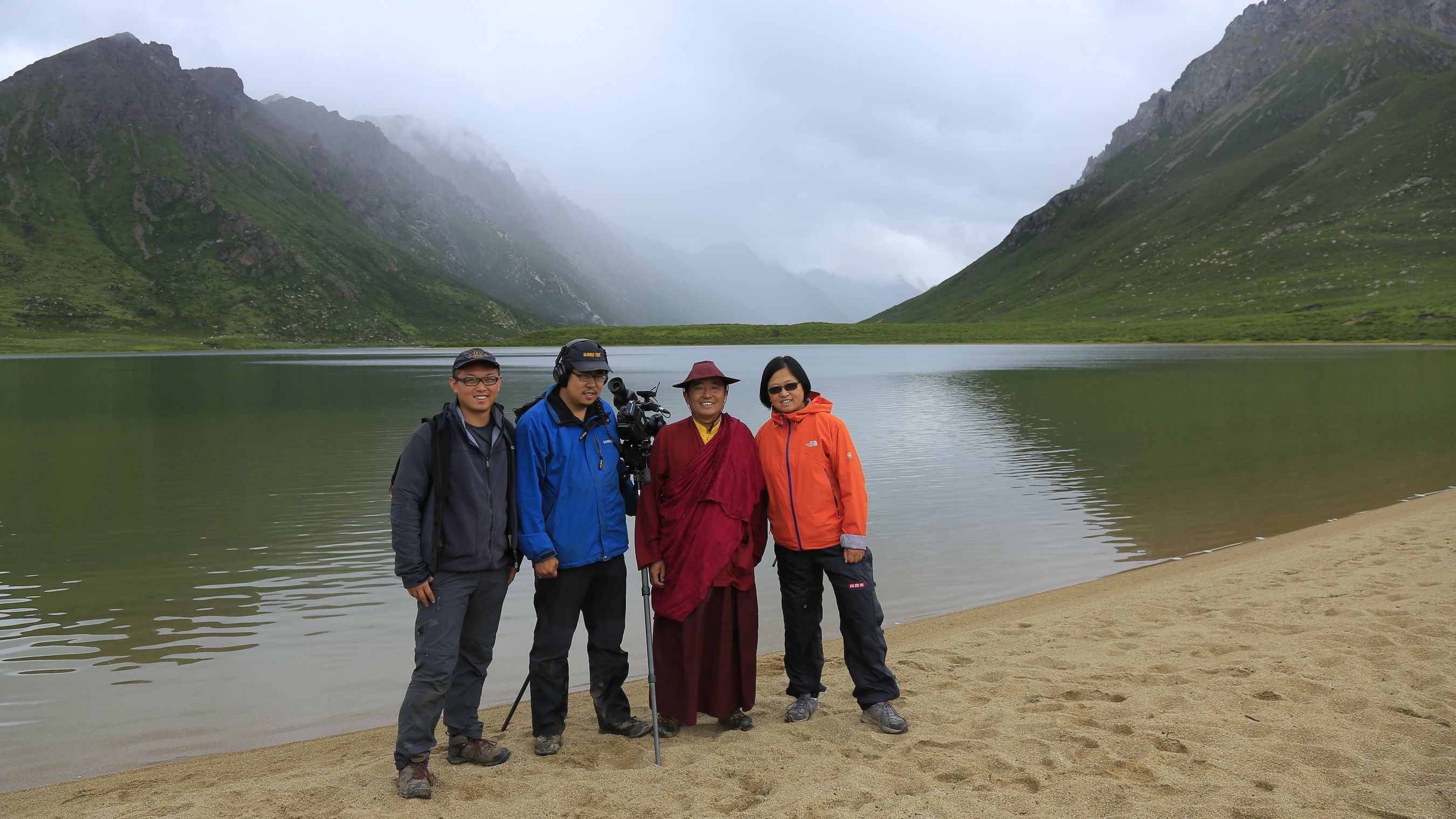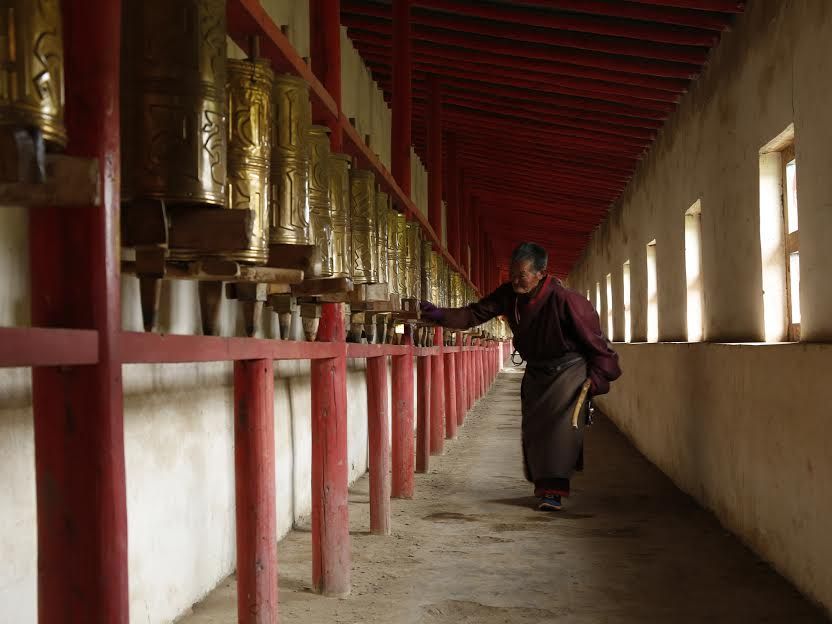Four years ago, I filmed a feature documentary about the rise of the green movement in China. Waking the Green Tiger was the story of the birth of that movement in a grassroots campaign that managed to halt the construction of a massive dam on the upper Yangtze River in 2008. Many of the leaders of that movement gave us terrific access to their stories and archives which allowed us to tell the little-known story of how the movement began. Many of the activists in the documentary, including investigative journalist Liu Jianqiang, were born in the 1970s, in the middle of China's Cultural Revolution. They were raised in an era that embraced science and rationalism and dismissed traditional beliefs like Confucianism, Daoism and Buddhism as "superstitions."
But when I returned recently for a screening of the documentary in 2013, I was surprised to hear that many of the activists I had met, along with a widening circle of artists, filmmakers, writers and even politicians, had taken up Tibetan Buddhism. This, I realized, is part of a larger trend. According to research by the Pew Center nearly one in five Chinese identify themselves as Buddhists and other faiths are growing quickly as well. But why were green activists especially drawn to Tibetan Buddhism, one of the smaller branches of Buddhism with about 5 million adherents?
This question was also on the mind of my friend and co-director Shi Lihong. She's one of China's pioneering green filmmakers and has been working in the movement since the late 1990s. She was a key collaborator for me in the making of Waking the Green Tiger. She now lives in Dali, an old city in a region of mountains and blue lakes in Yunnan province in southwestern China. This area is a rich mix of Tibetan and other indigenous religions. Lihong was finding that some of her friends there have also become Tibetan Buddhists. She was becoming curious herself.
The idea that we should make a short film about this solidified at a small forum on green filmmaking that was sponsored by the Asia Society and the Pulitzer Center on Crisis Reporting. The event was held in one of China's new mega cities, Guangzhou. The screenings and networking took place in a small art gallery. Appropriately, the gallery was underground. The forum was attended by journalist Liu Jianqiang, who helped to make our earlier documentary. When he told us that he too is now Tibetan Buddhist we knew we had to make a short film. Jon Sawyer from the Pulitzer Center was also interested in a short documentary that could be made available for broadcast as well as for use in the Center’s network of educational partners in the United States and abroad. Soon after the meeting Fred de Sam Lazaro, a correspondent for PBS NewsHour and Religion & Ethics Newsweekly programs offered to narrate, giving us access to an American audience.
I was hoping to be part of the film crew visiting the Tibetan monastery at Baiyu. The monastery and village are tucked away in the spectacular mountains and lakes near Nianbaoyuze, a mountain range considered sacred by the Tibetans and recently declared a national park. The landscape of the high plateau, over 14,000 feet above sea level, reminds me of the US and Canadian arctic, wild and beautiful, and I was looking forward to the visit. But the area where the crew was headed, in a Tibetan region of Sichuan Province known as Ganzi, was the site of protests by Tibetan Buddhists in 2008, and my presence as a foreign journalist would have drawn a lot of attention. So Shi Lihong took cinematographer Li Lei, who has been in the area before, and went to visit Tashi Sange, a Tibetan scholar, monk, teacher, filmmaker and green activist himself. We were hoping that by filming Tashi we could discover—and show viewers—what it is about Tibetan Buddhism that has captured the hearts and minds of our green activist friends. This film is our answer.
Watch the 20-minute version of the film here.
Watch a shorter version of the film, as featured on Religion and Ethics News Weekly.
Acknowledgments:
This short film was made possible by the generous contribution of time, footage and labor by the following
VANCOUVER POST PRODUCTION
Director: GARY MARCUSE
Editor: XIA TONG
Music: DENNIS BURKE
Mixer: EWAN DEANE
Online: LARRY DI STEFANO
Administration: BETSY CARSON
Animation: MARK STUCKERT, SEQUENCE POSTBAIYU AND BEIJING
Director: SHI LIHONG
Camera: LI LEI
2nd Camera: ZHAO HANG
Audio: WEI XIAOYU
Driver: YOU FENGNARRATION
FRED DE SAM LAZARO
Under-Told Stories Project
St. Mary's UniversityVOICE OVER
Catherine Zhang
Kalsang DawaSPECIAL THANKS
LU ZHI
TASHI SANGE
QIAMEI RINPOCHE
BAIYU MONASTERY
RESIDENTS OF BAIYU
YOUNGHE LAMA TEMPLE
SANJIANGYUAN NATURE RESERVE
OMNIFILM POSTSTOCKSHOTS
IBE
SHAN SHUI
TASHI SANGE
FACE TO FACE MEDIA
XI ZHINONG, WILD CHINA FILM
ALLIANCE OF RELIGION AND CONSERVATION
GUIZHOU SATELLITE TV
TAKUNGPAO.COM.HK
CCTVProduced by Face to Face Media
in association with Wild China Film
and the Pulitzer Center on Crisis Reporting
Executive Producer JON SAWYER© Face to Face Media 2014



